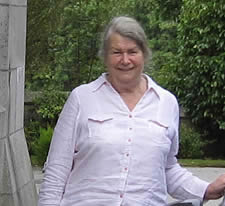
Horseytalk.net/Hoofbeat EXCLUSIVE
NATURAL ENGLAND

A Briefing
The Countryside and Rights of Way Act 2000 (CROW) heralded change by the introduction of Restricted Byways.
Says Maureen Comber
 Half a century after the National Parks and Access to the Countryside Act 1949, the Countryside and Rights of Way Act 2000 (CROW), heralded change by the introduction of Restricted Byways. These replaced RUPP’s and are for use on foot, on horseback or leading a horse, a right of way for vehicles other than mechanically propelled vehicles; restricted byway means a highway over which the public have restricted byway rights, with or without the right to drive animals of any description along the highway, but no other rights of way. This now made clear the inclusion of horse and carts but the exclusion of motor vehicles.
Half a century after the National Parks and Access to the Countryside Act 1949, the Countryside and Rights of Way Act 2000 (CROW), heralded change by the introduction of Restricted Byways. These replaced RUPP’s and are for use on foot, on horseback or leading a horse, a right of way for vehicles other than mechanically propelled vehicles; restricted byway means a highway over which the public have restricted byway rights, with or without the right to drive animals of any description along the highway, but no other rights of way. This now made clear the inclusion of horse and carts but the exclusion of motor vehicles.
However the problems with damage by 4WD vehicles and disputes on the ground seemed to escalate after CROW, so the then Rural Affairs Minister, Alun Michael launched a DEFRA consultation in December 2003 for ‘Use of mechanically propelled vehicles on rights of way’, with the intention of finding a way to introduce some form of legislation to control inappropriate off roading. This initiative was not helped by a House of Lords decision, Bakewell Management v Brandwell in 2004 which opened the way for prescriptive claims by motor vehicles for BOATS. Therefore in 2005 the Natural Environment and Rural Communities bill was introduced with the aim of overturning the Bakewell judgement, to prevent horse and cart routes being used as Byways.
NERCA, Part 6, sec. 66 & 67 made extensive limitations for claiming use by motor vehicles. Sec.66 ‘For the purposes of the creation after commencement of any other public right of way use (whenever occurring) of a way by mechanically propelled vehicles is to be disregarded’.
Sec.67 extinguishes public vehicular rights over ways not already shown on the definitive map and statement as byways, subject to exceptions. As such, if the right did exist pre-commencement it would have been extinguished on 2nd May 2006 in any event.
Some local authorities say that entry on the list of streets means that no rights are extinguished but this is not correct as routes are only exempted from extinguishment if, immediately before commencement, a route appeared on the list AND it was not shown on the definitive map and statement.
NERCA sec. 68 states that vehicle rights cannot be gained through use of pedal cycles but such use can be used to claim Restricted Byways.
There are other powers for Local Authorities to limit vehicle access by way of Traffic Regulation Orders under the RTA 1984. Also NERCA sec.72 extends the power to National Park Authorities to make such orders over byways, RB’s, bridleways, footpaths and unsurfaced carriageways.
Please feel free to email me if you have any questions or I can be of help m.comber@btinternet.com



